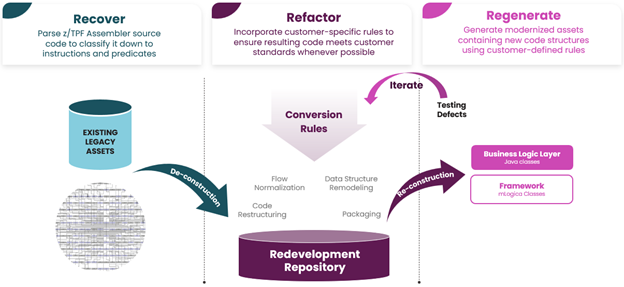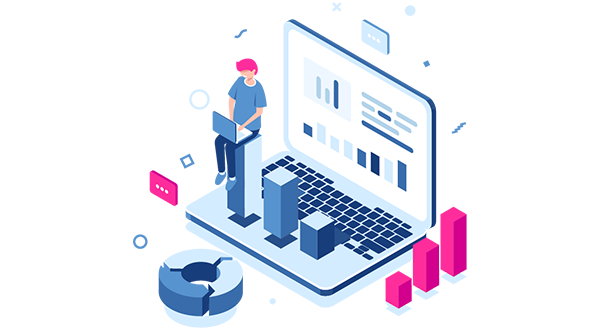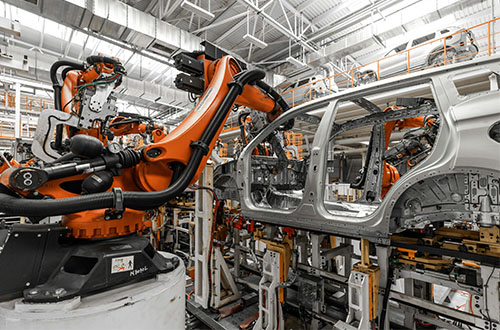

Seamlessly Transitioning from IBM TPF to the Cloud

The mLogica Migration Team
Unlocking Scalability, Agility, and Cost Efficiency by Migrating
Mission-Critical Systems with mLogica’s AI-Powered Technologies
The IBM Transaction Processing Facility (TPF) is a specialized operating system engineered to manage substantial transactional throughput in a real-time environment with high efficiency. Initially developed by IBM during the 1960s to accommodate the transactional necessities of the airline industry, TPF has undergone significant evolution to cater to the transaction processing demands across multiple industry sectors, including but not limited to banking, telecommunications, and retail.
The system’s architecture is highly optimized for speed, reliability, and scalability, making it valid for enterprises needing continuous, high-volume transaction processing. Its design principles focus on minimizing processing latency and maximizing transaction throughput by employing advanced concurrency control mechanisms and optimized data access paths. This results in exceptional performance, allowing the system to handle thousands of transactions per second and often millions daily without sacrificing accuracy or performance.
The system functions on a real-time, interrupt-driven framework, adeptly prioritizing and managing large volumes of concurrent transactions with minimal delay. This efficiency is achieved through a unique event-driven programming model, where each transaction is treated as an event processed in real-time. Once one operation is completed, the system swiftly moves on to the next.
Key Business Drivers for Migrating from IBM TPF to Cloud-Based Platforms
Maintaining legacy TPF systems incurs substantial costs due to legacy proprietary hardware, specialized support, and licensing fees. Transitioning to cloud-based platforms can markedly reduce these operational expenses by adopting a more economical OpEx model. Additionally, many of the engineers and developers who originally built and maintained these systems are nearing retirement, and there is a significant gap in the availability of new talent proficient in TPF.
Innovation and Productivity
The Cloud allows customers to access computing services over the Internet on demand. They are made up of technologies that are much easier and faster to learn and are designed for easy development, update, and optimization. Most of the cloud systems allow the use of open-source technologies, thereby making it much more appealing and inspiring to work on for the new engineers. Cloud systems have transformed the IT and business landscape by providing more flexible, easy-to-use, cost-effective, and, most importantly, highly secure software, systems, and technologies.
By moving away from TPF systems, companies can attract the best talent available at a much more reasonable cost. Since cloud adoption is accelerating, many trained resources are available in the market that can be deployed with a much smaller training curve.
Embracing AI, Data Analytics, and Next-Gen Technologies
Cloud systems enable customers to implement and use artificial intelligence and data analytics at the touch of a finger. Using AI and analytics, customers can provide their end clients with more insight into their data, thereby enabling smarter decision-making. After moving to the Cloud, customers can start to use any technology they prefer, whether it’s a NoSQL database for storing their app data, implementing AI in the tools, or integrating data analytics for advanced reporting and analytics.
Not only that, but customers can also publish their own AI Application Programming Interfaces (APIs) to allow other companies and developers to build solutions based on these APIs without needing any prior background in AI or data. These solutions can then be published in various marketplaces, enhancing business opportunities for customers and developers.
Needless to say, we're still pushing the boundaries by embracing Cloud. Customers can further optimize their cloud strategy toward a mix of private-public cloud architecture in multiple regions.
Migration Challenges and Success Factors
TPF systems are highly specialized and have been customized over decades to meet specific industry needs. Their custom-built nature, with complex data structures and transaction processing logic, makes it difficult to migrate them directly to modern cloud platforms through manual code rewriting. Re-engineering these systems for the cloud requires deep expertise and a nuanced understanding of both TPF and cloud technologies. These migrations are complex and challenging and risk failure if executed incorrectly.
The fundamental architectural disparities between TPF and cloud platforms increase these challenges. TPF’s design is centered on achieving minimal latency and high throughput, frequently leveraging direct hardware access, and optimizing low-level programming languages to meet its performance objectives. Conversely, cloud environments are generally constructed on shared infrastructure, incorporating virtualization and abstraction layers that, despite their flexibility and scalability, inherently fall short of matching TPF’s real-time processing prowess.
Overcoming the Migration Challenges with mLogica’s Automated Software LIBER*M
mLogica has unique software capabilities for Mainframe modernization, including z/OS Assembler language refactoring through our highly automated software, LIBER*TULIP. Our software has been further enhanced to migrate the Basic Assembly Language (BAL), the primary programming language, and its supporting macros used in the TPF systems.
However, before migrating the TPF application components, it is critical to conduct a thorough assessment of the inventory. The assessment helps determine if there are any missing objects (source code not available), any missing dependencies (3rd party tools), and if there are any duplicated objects.
LIBER*DAHLIA – an Automated Discovery and Assessment Module
LIBER*DAHLIA is an eclipse GUI-based assessment tool using an in-house developed z/TPF parser to analyze the source code provided. The tool generates reports to map all the dependencies referenced by the application source code. The tool will highlight missing dependencies (e.g., macros referenced, programs), 3rd party tools, IBM System macros and programs, and database dependencies. The tool will also generate a detailed cross-reference report between programs, macros, and database objects to quickly analyze the complexity of the application in scope. All these reports are packaged and discussed with the customer to arrive at the complete in-scope objects to convert.
LIBER*TULIP – Automated Code Refactoring of Legacy Applications
LIBER*TULIP to Java is a Java-based language converter that creates an abstract syntax tree (AST) from z/TPF source code, which is then used during the conversion. LIBER*TULIP is an eclipse-based tool and comes with its own package to install on any Windows-based machine. The tool analyzes the TPF source code, generates statistics on what percentage of the code can be accurately converted, and provides a log highlighting area of interest to review with the conversion team before conversion. It will also generate warning messages for the conversion team to review during the conversion. Most likely, some post-processing review needs to be done to ensure the converted code is error-free during compiling and was built with all dependencies included. The customer is then provided with the entire package along with the runtime framework to deploy.
LIBER*TULIP Runtime Framework
A Java-based framework to support the classes and objects referenced by the converted application code. This framework has all the packages to set up the runtime, instantiate the classes, and also provide for integration APIs to external products and applications. The converted code cannot be built (compiled) or executed without the runtime framework.
Z/TPF Automated Refactoring using LIBER*TULIP is illustrated in the following graphic:

Minimize Risk, Timelines, and Costs
Every customer interested in modernizing their legacy systems to the cloud is looking for a repeatable process to regenerate the code without losing any functionality. An automated and repeatable solution will lead to a faster time to market (smaller modernization duration) with higher efficiency and accuracy, eliminating project failure risks. Customers also want to retain legacy and current application customizations without disrupting application availability which will reduce disturbances to daily business operations.
mLogica Mainframe modernization solutions are uniquely positioned to modernize legacy IT ecosystems across all industry segments. mLogica’s automated tools and processes make this possible with the following.
Standardized and Repeatable Process
LIBER*M generates an audit trail, including extensive logging and tracing, issue management, and version management. This trail enables our team to easily track what was converted, which settings were used, what changes were made, what the source was, and which manual adjustments need to be made. All issues reported go back into product development and improvement for better coverage in the next conversion cycle.
Automated Workflows
LIBER*M handled core tasks like data layout generation, code conversion, and deployment automation, minimizing project-delaying human error and the need for manual intervention.
Dramatically Reduced Timelines
Automation substantially accelerates the migration process, allowing customers to take advantage of cloud-native scalability, technologies, and security features more quickly.
Cost Benefits
Automating manual tasks translates into substantial cost and resource savings for the Customer throughout the project. In addition, by accelerating this transition, the Customer can more quickly eliminate its previous system's infrastructure, licensing, and maintenance expenses.
Scalability and Repeatability
The automation capabilities of LIBER*M make it easier and simpler to execute the organization’s large-scale, complex migrations from source to target environment and enable a seamless transition across multiple regions.
Seamless TPF Modernization with mLogica’s Automated Migrations
With mLogica’s automated Mainframe migration solutions, migrating from a TPF system to the cloud is faster and easier than more manual migrations. By automating complex tasks such as code transformation, data conversion, and system integration, mLogica drastically reduces the time, cost, and risks typically associated with legacy system migrations. Organizations can confidently move their mission-critical applications to modern cloud environments without compromising performance or reliability. In doing so, businesses not only future-proof their IT infrastructure but also unlock the agility and scalability of cloud technology, positioning themselves to innovate and grow in an increasingly competitive digital landscape. mLogica’s expertise ensures seamless migration, allowing enterprises to focus on what matters most—driving their business forward with modern, flexible technology solutions.








































